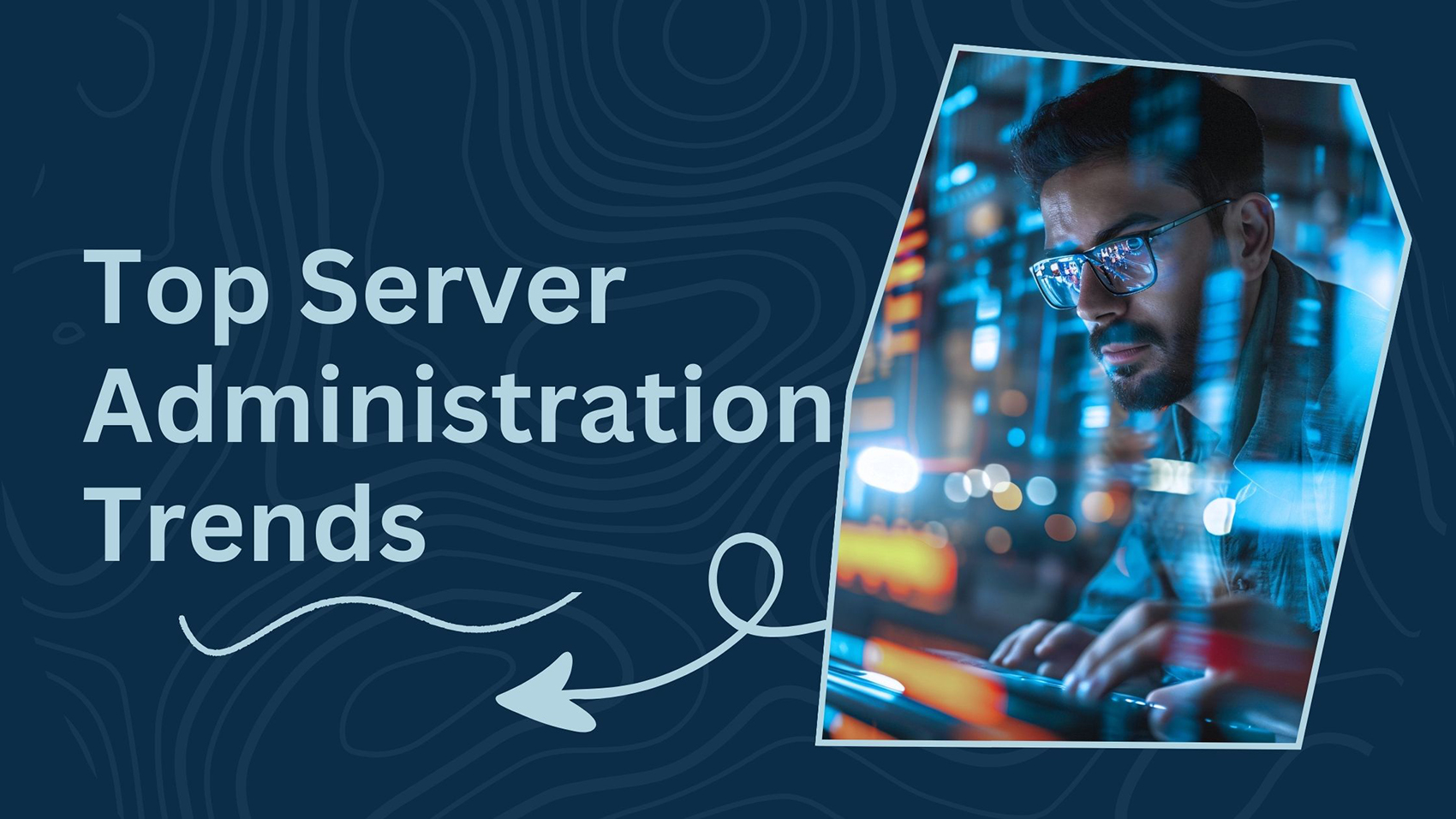No products in the cart.
 Top Server Administration Trends
Top Server Administration Trends
In the digital era, where uptime and performance are non-negotiable, server administration and maintenance play a critical role in ensuring seamless IT operations. Whether you’re managing an enterprise-level data center or hosting a small-scale website, having a well-defined server management plan can save you from performance bottlenecks, security breaches, and costly downtimes.
This blog serves as your comprehensive guide to server administration and maintenance in 2025, covering essential tasks, tools, and best practices to keep your infrastructure secure and reliable.
What is Server Administration?
Server administration involves the management and upkeep of computer servers. It includes installing and configuring server software, monitoring server performance, managing user access, ensuring data security, and performing backups and updates.
Server administrators are responsible for:
- Server setup and configuration
- Monitoring server health and resource usage
- Security updates and patches
- Backup and disaster recovery
- User and permission management
Importance of Server Maintenance
Regular server maintenance is crucial to:
- Ensure security: Prevent unauthorized access and malware attacks
- Optimize performance: Avoid system slowdowns and crashes
- Reduce downtime: Identify and fix issues before they escalate
- Extend hardware lifespan: Prevent overheating and resource overuse
- Comply with standards: Meet regulatory and industry-specific compliance needs
Types of Server Maintenance Tasks
- Hardware Maintenance
- Dust cleaning
- Checking fan operations
- Hardware diagnostics
- Software Updates
- Operating system patches
- Application upgrades
- Security firmware updates
- Performance Monitoring
- CPU and memory usage tracking
- Network bandwidth monitoring
- Log analysis
- Backup and Recovery
- Automated backup scheduling
- Recovery testing
- Cloud-based redundancy
- Security Audits
- Firewall configurations
- Intrusion detection system reviews
- Password policy enforcement
Best Practices for Server Administration
- Automate Routine Tasks Use automation tools like Ansible, Puppet, or Chef to manage configuration and deploy updates consistently.
- Use Monitoring Tools Deploy solutions like Nagios, Zabbix, or Datadog for real-time performance insights and alerts.
- Implement Redundancy Avoid single points of failure by using RAID setups, multiple power supplies, and backup servers.
- Regularly Patch Systems Schedule monthly update sessions and emergency patch rollouts for critical vulnerabilities.
- Maintain Documentation Keep logs of server setups, changes, and recovery procedures to assist in troubleshooting.
- Limit User Access Implement the principle of least privilege to minimize risk exposure.
- Test Recovery Plans Simulate failure scenarios to ensure backup systems are functional and efficient.
Top Server Management Tools in 2025
- cPanel/WHM – Ideal for web hosting server control
- Webmin – Open-source server management via web interface
- Nagios – System and network monitoring
- Plesk – Comprehensive server automation and control panel
- Cockpit – Lightweight Linux server manager
- SolarWinds Server & Application Monitor – Enterprise-grade monitoring
Common Server Administration Mistakes to Avoid
- Ignoring server updates
- No backup plan or failing to test backups
- Weak passwords and poor access control
- Overlooking log files
- Not monitoring uptime or performance
- Inconsistent documentation
Conclusion
Server administration and maintenance are the backbone of a secure and high-performing IT environment. With evolving cyber threats and the increasing complexity of infrastructures, investing time and effort into robust server management practices is not optional—it’s essential.
By following the strategies and tips outlined above, businesses and IT professionals can safeguard their systems, optimize server performance, and ensure business continuity in 2025 and beyond.
Connect with us on social media! Follow our Facebook, Twitter, and LinkedIn pages for the latest updates and exclusive content tailored for you.
Kindly take a look at our recent case study (Server Virtualization And Consolidation)



 Top Server Administration Trends
Top Server Administration Trends